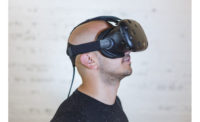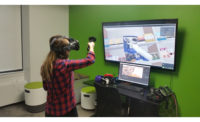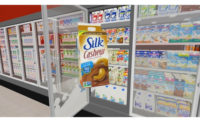Thanks to the Millennial generation, the freezer aisle is heating up. Sales are growing, as Millennial appetites push retailers toward new products in the frozen food category. And, as tastes change, operators are needing to adopt innovative technology to keep up. That’s where virtual reality (VR) comes in.
Virtual solutions designed specifically for retail can help improve store organization. This technology can also help retailers plan and place signage and create personalized experiences. Here’s how the implementation of 3D simulations and VR technology in user testing is helping retailers succeed in the frozen foods aisle.
Millennials are hungry for a frozen dinner
The positive sales trend in the frozen food category is an important part of the VR story.
After several years of decline, the frozen foods industry is experiencing an uptick in sales, ringing up nearly $57 billion annually, according to “The Power of Frozen 2019,” a study released by The American Frozen Food Institute (AFFI), Arlington, Va., and Food Marketing Institute (FMI), Arlington, Va.
This may not sound like major movement, but in an aisle that had been languishing for years, these numbers represent a huge jump. They also point to a significant change in consumer attitudes toward frozen foods.
Millennial appetites are fueling change in this category and steering product development toward plant-based processed foods. This major consumer group is looking for healthier pre-made foods, which has resulted in the arrival of more diverse and competitive products on the market.
There are also simply more products available in this category, and it can be a challenge for retailers to figure out what will sell in a given store or location. Fortunately, predicting consumer appetites is a more precise science than ever before, and VR can help frozen food purveyors figure out what to stock and which innovative marketing solutions will help drive sales.
Consumers want a personalized shopping experience
Today’s consumers know that retailers are paying attention to what they buy and when, and so they expect a more tailored experience in store. In fact, 63% of consumers expected personalization as a standard part of their shopping experience, according to a survey presented by RedPoint Global, Wellesley Hills, Mass. And, their expectations are driving the entire supply chain’s shift toward reliance on digital technology.
One place where VR can help stores excel is in shelf placement, as highlighted in the AFFI and FMI study.
This optimized customer experience includes coupons, signage that provides shopper education and recipe ideation tools. These elements of a robust marketing program will enhance the customer’s in-store experience of the frozen foods aisle and draw attention to new products on the shelves. This is where virtual store shelf simulations can help brands fine-tune their marketing before putting collateral in the field.
Use VR to support data-driven marketing decisions
When it’s time to leverage tech to make decisions about how those innovative products will look in stores, VR provides a timely answer. Improvements to VR headsets and technology allow companies to easily create simulated displays where real people can browse a virtual store aisle.
This technology has accelerated past the old model of hardwired helmet with a trail of wires that inhibited user movement. Today’s VR standard hardware is a wireless headset that’s easy to wear and highly portable.
The most sophisticated VR tools also contain visual attention analysis (VAA) technology, which provides better data capture with digital test displays than ever before. The new headsets track where customers are looking with a higher degree of accuracy, which helps retailers decide where products should sit on the shelf and how to position them in relation to other products.
This tech can also help A/B test in-store signage and product packaging before anything goes to print. This is especially important within a freezer case where there’s a physical barrier customers must decide to open in order to access products.
VR helps run consumer tests more efficiently
Think back to the old methods for user testing—stocking a real shelf or case in a mock store, bringing customers inside one at a time and observing them carefully. Manual data entry into a sheet. Video tape review.
The days of fragmented data sets from the back of each store are over. Time-consuming guesswork has been replaced with precise data and digital hallways. Today’s user tests don’t involve lifting a single box of product.
Using virtual store simulations to run user tests produces more precise data, which helps drive decisions about what to order and where to place it on the shelf. This technology allows subjects to have a more realistic experience and produces better data, faster than ever before.
When a company is able to execute user tests in a timely manner with fewer logistical concerns, it will get the right products to market faster and with less guesswork (and less waste).
New technology improves the in-store experience
When brands are better able to predict what new products will interest shoppers and where to place these innovations in store, they have the data to power a more efficient supply chain from warehouse to checkout.
Efficient user testing with VR will help introduce the latest frozen foods in freezer cases in the right stores at the right time. This application of a VR-driven supply chain will bolster the upward trend in this promising category and throughout the store.



